Oil declined for a second day as OPEC’s internal disagreements undermined efforts among major suppliers to reach an agreement in Vienna on trimming output to support prices.
Futures fell as much as 1.1 percent in New York after sliding 2.1 percent at the end of last week. The Organization of Petroleum Exporting Countries ended a meeting on Friday without reaching a deal on country quotas, according to delegates who took part in the discussions. Non-OPEC nations finished talks with the group on Saturday without any supply commitments, Brazil’s Oil and Gas Secretary Marcio Felix said. Brazil attended as an observer.
Oil has fluctuated near $50 a barrel amid uncertainty over whether OPEC can implement the first supply cuts in eight years at its official November meeting. As the gathering opened in Vienna last week, OPEC Secretary-General Mohammed Barkindo warned of the consequences if producers don’t follow through on an agreement to reduce output. The price recovery has already taken far too long and suppliers can’t risk delaying it further, he said.
“Talks over the weekend make it seem less likely there will be an agreement on production cuts,” said Ric Spooner, a chief market analyst at CMC Markets in Sydney. “The market has probably made a fair bit of the adjustment, but I wouldn’t be surprised to see oil fall further into the $47 range.”
West Texas Intermediate for December delivery dropped as much as 53 cents to $48.17 a barrel on the New York Mercantile Exchange, and was at $48.44 at 2:48 p.m. in Singapore. The contract fell $1.02 to $48.70 on Friday. Total volume traded was about 4 percent above the 100-day average. Prices are set for a third monthly gain, up 0.4 percent in October.
OPEC Meeting
Brent for December settlement, which expires Monday, lost as much as 42 cents, or 0.8 percent, to $49.29 a barrel on the London-based ICE Futures Europe exchange after falling 1.5 percent Friday. Front-month prices are up 0.7 percent this month. The global benchmark traded at a premium of $1 to WTI. The more-active January contract slid 27 cents to $50.41 a barrel.
OPEC agreed in Algiers last month to trim output to a range of 32.5 million to 33 million barrels a day and is due to finalize the deal at its Nov. 30 summit in Vienna. The accord helped push prices to a 15-month high above $50 a barrel earlier this month, although they have subsequently fallen amid doubts the group will follow through on the pledge. More than 18 hours of talks over two days in the Austrian capital this weekend yielded little more than a promise that the world’s largest producers would keep on talking.
Some progress was made at the Friday meeting on the methodology to be used for allocating output quotas to OPEC members, said one delegate, who asked not to be identified because the talks were private. Russia reiterated that it’s willing to freeze production, rather than cut, but only if there is an OPEC agreement first, according to participants in Saturday’s meeting.
Oil-market news:
-
Iraq published data showing a rare level of detail for its oil production and exports as it seeks to be excluded from OPEC’s planned output cuts because of its war with Islamic militants.
-
Libyan crude production increased to 640,000 barrels a day, according to a National Oil Corp. official.
-
China’s oil output slump shows no signs of abating as the country’s state-run energy giants hold back spending amid the crash in prices.
-
Rigs targeting crude in the U.S. fell by 2 to 441 last week, according to data from Baker Hughes Inc. Friday.
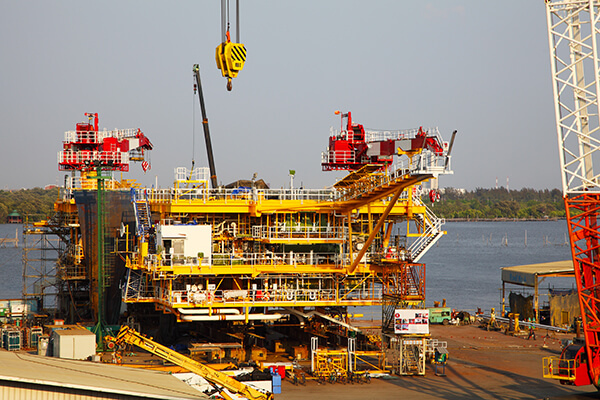
Oil investors are playing it safe as OPEC hammers out the details of a deal to trim output.
Money managers reduced bets on falling prices to the lowest since May as oil held above $50 a barrel, prolonging a rally that began when the Organization for Petroleum Exporting Countries announced a deal to cut production to between 32.5 million and 33 million barrels a day. The group plans to finalize the agreement at a meeting in Vienna on Nov. 30.
“The shorts are not laughing off this OPEC deal anymore,” Phil Flynn, a market analyst at Price Futures Group in Chicago, said in a phone interview. “There’s a growing realization that there’s going to be a deal to lock in production. Things will be relatively calm until we get the agreements.”
Saudi Arabia’s Energy Minister Khalid Al-Falih said Oct. 19 that many nations are willing to join OPEC in cutting production. So far, Russia has said it’s considering taking steps to stabilize the market. Alexander Novak, the country’s energy minister, said Sunday that “many scenarios” are being discussed. Venezuelan President Nicolas Maduro, on a tour of oil-producing countries to boost support for the deal, said Oct. 21 he’s in favor of inviting the U.S. to the next OPEC meeting and creating an “alliance” of OPEC and non-OPEC nations.
“This week the market is in a pause after the run-up to $50,” said Michael Lynch, president of Strategic Energy & Economic Research in Winchester, Massachusetts. “There’s still a lot of question about what OPEC is actually going to do next month. Absent that, people are waiting for some more direction than we have now.”
In addition to slashing short bets in West Texas Intermediate crude by 21 percent during the week ended Oct. 18, hedge funds also reduced their long positions by 3.2 percent from a two-year high, according to the Commodity Futures Trading Commission. Net longs increased to the highest in two years.
Oil Inventories
WTI slipped 1 percent during the report week to $50.29 a barrel. The U.S. benchmark rose 0.1 percent on Monday to $50.91 as of 9:41 a.m. London time. Prices reached a 15-month high on Oct. 19 after government data showed U.S. crude stockpiles fell to the lowest level since January.
U.S. stockpiles dropped 5.25 million barrels to 468.7 million in the week ended Oct. 14, according to the Energy Information Administration, after reaching 512.1 million in late April.
“$50 will be the floor through the OPEC meeting, barring some spike in the dollar,” Price Futures Group’s Flynn said. “With U.S. inventories falling at a rapid pace, the prospect of a cut or freeze has real consequences.”
In other markets, net-bullish bets on gasoline rose 9.4 percent to 40,085 contracts, the highest since March 2015, as futures climbed 1.5 percent in the report week. Ultra low sulfur diesel net-longs fell 7 percent to 8,439. Futures slipped 1.2 percent.
WTI held above $50 a barrel even as Russia’s energy minister said the country may produce a new oil-output record next year. As OPEC members head into technical meetings Oct. 28-29, investors will be watching for details on country allocations. Iraq should be exempted from cutting production, Oil Minister Jabbar Al-Luaibi said Sunday.
“The market just wants to see the proof in the pudding,” said Carl Larry, director of oil and gas at consultant Frost & Sullivan in Houston. “We got to $50. That’s as good as it’s getting, going into the November election and the actual OPEC meeting.”
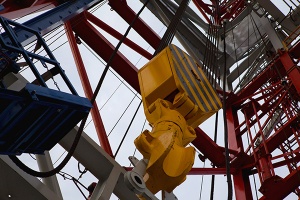
Russia’s energy minister met with counterparts from Saudi Arabia and other Arab Gulf oil-producers to discuss steps to stabilize crude markets amid OPEC’s drive to win cooperation from the biggest supplier outside the group in limiting output to prop up prices.
Ministers from Saudi Arabia, Kuwait, Bahrain, Qatar and the United Arab Emirates gathered in Riyadh for oil talks at the offices of the Gulf Cooperation Council secretariat. Russian Energy Minister Alexander Novak met with them later on Sunday for a separate round of talks and was expected to speak afterward at a news conference. Oman was the only one of the GCC’s six members not attending.
“Oil markets are on the way to being re-balanced,” Saudi Arabia’s Energy and Industry Minister Khalid Al-Falih said at the start of the GCC meeting. “Low oil prices are putting pressure on GCC countries’ development plans.” Russia was invited to attend the Gulf ministers’ talks, he said. “We are working with Russia and other oil producers to stabilize the market.”
Novak is set to meet representatives of the Organization of Petroleum Exporting Countries on Monday in Vienna for talks that could include production cuts, and officials from Russia and Saudi Arabia will hold bilateral discussions later this month. While Russian President Vladimir Putin has pledged to cooperate with OPEC, he’s been vague about whether the country will trim output or just freeze production at September’s post-Soviet record.
OPEC is seeking to attract other producers to join the plan it agreed to last month at a meeting in Algeria to put into effect the group’s first output cuts in eight years. Crude plunged to a 12-year low in January, squeezing the budgets of producers from Venezuela to Saudi Arabia. The price slide led OPEC to abandon its two-year-old Saudi-led policy of allowing members to pump as much as they could in an effort to protect market share.
“We hope that they can reach an overall agreement on which Russia and other non-OPEC producers will join and cooperate with OPEC members,” Iranian Oil Minister Bijan Namdar Zanganeh told reporters on Sunday in Tehran.
Iraq asked OPEC for an exemption from participation in any cuts, Oil Minister Jabber Al-Luaibi said Sunday at a news conference in Baghdad. He cited Iraq’s war against Islamic militants as the reason the country should be grouped with Iran and Nigeria as members not required to contribute to the collective cuts OPEC agreed on last month in Algeria.
Record Output
Russia is producing about 10.9 million barrels a day on average this year, according to Energy Ministry data. Officials have emphasized the nation’s ability to keep pumping; the latest draft of Russia’s energy strategy sees a potential increase in annual production from 534.1 million metric tons last year to 555 million tons, or 11.1 million barrels a day, by 2020.
OPEC’s 14 members pumped a record 33.75 million barrels a day in September, with the Saudis accounting for 10.58 million barrels, according to data compiled by Bloomberg. Output in Saudi Arabia, the group’s biggest producer, fell short of the 10.66 million-barrel-a-day record in July, the data compiled by Bloomberg show.
Brent crude, the global benchmark, has gained almost 40 percent this year, trading at about $52 a barrel last week. OPEC is trying to determine which members will reduce their output and by how much, with details to be made final at the group’s Nov. 30 meeting.
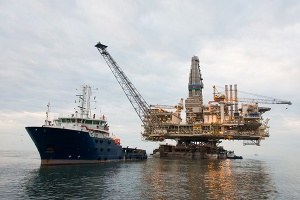
Oil investors must be getting dizzy.
In the two months since OPEC began talking about capping production, speculators’ sentiment has swung wildly, with government and exchange data showing the four biggest weekly position changes ever for the two global benchmark crudes. The latest shift is to optimism, with money managers the most bullish on West Texas Intermediate oil in two years.
“Since the summer we’ve had big moves in net length,” said Mike Wittner, head of oil-market research at Societe Generale SA in New York. “It usually has trended up or down over a couple of months. Now this is happening in a matter of weeks. We’re seeing huge shifts.”
Money managers reduced bets on lower WTI prices by more than half in the past three weeks as OPEC agreed to its first deal to cut output in eight years. That drove net length to the highest since July 2014 in the week ended Oct. 11, Commodity Futures Trading Commission data show. Brent longs also rose, leaving the combined length of the two benchmark contracts at the highest in at least five years.
The Organization of Petroleum Exporting Countries agreed on Sept. 28 in Algiers to trim output to a range of 32.5 million to 33 million barrels a day, which is due to be finalized at the Vienna summit next month. OPEC took a step toward coordinated supply curbs with Russia last week and will meet for a “technical exchange” to set a road map for output levels later this month.
The swings in sentiment have tracked the rocky road to $50 a barrel oil. Speculators’ combined WTI and Brent crude net position rose or fell more than 100,000 contracts four times in the past two months, the only moves of that size in CFTC and ICE Futures Europe data going back to 2011.
Prices began to rise after OPEC’s president said Aug. 8 that the group would hold informal talks in Algiers and Saudi Arabia signaled Aug. 11 it was prepared to discuss taking action to stabilize markets. Futures gave up most of those gains amid doubts that Saudi Arabia and Iran to reach an deal, before the agreement in Algiers sparked the latest rally.
“The change in tone from the Saudis is important,” said Kurt Billick, the founder and chief investment officer of Bocage Capital LLC in San Francisco, which manages about $432 million in commodities equities and futures. “Getting to a yes in Vienna is challenging. That they are willing to talk about a deal is a big change.”
Money managers’ short position in West Texas Intermediate crude, or bets on falling prices, shrank by 28 percent to 71,407 futures and options. Longs rose 1.8 percent to the highest since June 2014. The resulting net-long position increased 13 percent.
WTI increased 4.3 percent to $50.79 a barrel in the report week. Prices on Monday were down 0.6 percent at $50.04 a barrel as of 9:13 a.m.
Other Markets
In the Brent market, money managers boosted net longs by 11 percent to 396,694 during the week, according to data from ICE Futures Europe. It was the most bullish total since April.
In fuel markets, net-bullish bets on gasoline rose 19 percent to 36,650 contracts, the highest since March 2015, as futures slipped 1.1 percent in the report week. Wagers on higher ultra low sulfur diesel prices climbed 46 percent to 9,074. Futures rose 2.1 percent.
The scale of the internal differences OPEC must resolve before securing a deal to cut supply was revealed Oct. 12 as the group’s latest output estimates showed a half-million-barrel difference of opinion over how much two key members are pumping.
“The bottom line is that they’ve made an agreement,” Wittner said. “If you are going short you are betting against the Saudis, which isn’t a good thing historically.”

Increased automation and digitalization in the oil and gas industry will shake up employment opportunities and create new roles in the sector, suggests Thomas Sparks, head of strategy at Siemens Oil & Gas.
“Traditional job profiles in the oil and gas industry will change,” Sparks told Rigzone.
“Onshore training, remote operations centers, manufacturing based on 3D design and online monitoring will become critical game changers,” said Sparks, offering some insight into which industry segments are likely to see the most benefit through a growing shift towards automation and digitalization.
This shift won’t necessarily be bad news for oil and gas professionals though, according to Sparks, who believes new opportunities will emerge as a result of the change.
“It is not a question of whether oil and gas jobs will lose out to automation and digitalization in the future,” said Sparks.
“The question is how the industry will be able to translate huge quantities of information into better operational decisions and how this will lead to new job profiles and job opportunities for the workforce,” he added.
The primary goal of automation is not to replace workers, but to improve the productivity, safety and reliability of operations,” Andrew Hird, vice president and general manager of Honeywell Process Solution’s digital transformation unit, said.
“Forward-thinking organizations seek to empower people through automation, not replace them. By automating basic, repetitive tasks, people can be freed up for more productive, creative work,” he added.
Highlighting a current example of this trend, Hird said that technologies using internet connectivity are creating opportunities for roles such as data scientists, while improving the consistent gathering and analysis of a fast-growing amount of operational data. As automation is used to gather and present data, Hird stated that people are needed to interpret this information and make business-critical decisions based on it.
As many oil and gas companies around the world are facing a shortage of qualified personnel to operate multi-billion production facilities, Hird suggests that the challenge in the current oil price environment is not how to reduce the number of employees. Rather Hird implies that companies must now figure out how to increase production with a declining workforce, as well as attracting and retaining a new generation of workers.
“The only way many … [companies] are able to do so is through improved automation, which again allows them to deploy employees in more productive areas,” Hird said.
Automation Demand Increasing
The demand for automation software in the upstream oil and gas industry was in a period of decline late last year, according to Ali Raza, the vice president and general manager of advanced solutions at Honeywell Process Solutions.
A key reason for the decline was the fluctuating low oil price environment, Raza told Rigzone. The Honeywell VP added that interest in these types of systems first began to fall drastically when the oil price dropped in 2014.
“Although, some of the bigger companies … slowed down their projects they still wanted to continue, because I think one of the major concerns was cost optimization and basically trying to get savings out of cost optimization,” he added.
In spite of the decline, Raza predicted that demand in these systems would pick up towards the end of 2016.
Looking further ahead, IDC Energy Insights, a market provider of intelligence for the global technology industry, forecasted earlier this year that the top 50 percent of oil and gas companies will double down on oilfield operation automation, to double the productivity of those operations, by 2020.
“Oil and gas companies realize they must be more aggressive and consistent in how they run their operations,” Chris Niven, research director for IDC Energy Insights, told Rigzone.
“Many companies are now implementing proven approaches and techniques used over years by manufacturing to run operations more effectively and efficiently,” he added.

Oil and gas industry conditions stand to gain strength after 2017, in a confluence of growing demand and a collapse in no-shale capacity, according to an end-of-quarter report from Morningstar in Chicago.
“We are increasingly bullish on oil prices rallying in the medium term, and have raised our WTI forecast to $65/bbl for 2018, which is the level we believe is required to drive a large-scale recovery in U.S. shale activity,” wrote analyst Joe Gemino. “Even so, the strength of U.S. shale is lurking beneath the surface: Our analysis shows that the recent uptick in rigs and falling shale decline rates together are enough to stabilize U.S. crude production within six months.”
Gemino also said that if U.S. activity doesn’t scale back, production will begin to grow again in 2017. That highlights the strength of tight oil in the country, he said, which would limit a commodity price rebound.
“Should a price rally ensue, it is far too strong to not overheat and eventually snuff out any future oil price rally. We remain bearish on oil prices for the longer term, and we reiterate our mid-cycle oil price outlook of $55 WTI ($60 Brent),” he said.
But keeping the above in mind, Gemino said, there is more evidence that shale producers can survive – perhaps even thrive – at lower prices than assumed in earlier forecasts.
Through labor cost-cutting and efficiency advances in technology, shale producers have managed to reduce production costs, which makes drilling profitable even at lower commodity prices. In February, some producers made headlines suggesting that “$40 is the new $70” per-barrel price needed to drill, but that has yet to fully manifest.

International oil companies are reaching out to Brazil after it opened its most promising offshore region to increased competition, a move welcomed by Petrobras Chief Executive Officer Pedro Parente as he seeks partners to spread investment costs.
Producers rushed to contact Houston-based Brazilian officials last week after Congress removed a requirement that Petrobras control operations at all new projects in an area known as the pre-salt, Parente said. It’s the most investor-friendly change in regulation since the 1997 oil law that ended the company’s monopoly in Brazil.
“Our foreign ministry representation unit in Houston, in the very following day, received seven manifestations of interest of big companies,” Parente said at Bloomberg’s offices in New York City.
The policy shift comes as the state-controlled producer is selling assets to slash debt, which stood at $125 billion in the second quarter. The Rio de Janeiro-based producer has a group of more than 30 projects worth about $40 billion that it is marketing to potential buyers, Parente said.
Allowing others to control drilling and production in the potentially oil-rich pre-salt will provide a larger group of offshore operators for Petrobras to team up with at upcoming licensing rounds. Foreign oil companies haven’t had a chance to bid for licenses to operate in the pre-salt since before anyone knew how vast the reserves were.
The nationalistic oil policies were put in place in 2010 when the government moved to put Petrobras in control of the biggest group of offshore discoveries this century. This limited access to bidding with Petrobras as a minority partner, or trying to buy into an existing license awarded under previous rules.
Pre-salt oil was formed when the South American and African continents began separating more the 100 million years ago. The repeated flooding and evaporation of salt water in what is now the South Atlantic created a layer of the mineral as thick as 2,000 meters that blankets the deposits. The biggest discovery in the area, Libra, holds an estimated 8 to 12 billion barrels of recoverable reserves.
Interest in the region is strong. Petroleo Brasileiro SA, as it is formally known, recently sold its stake in a pre-salt concession to Statoil ASA for $2.5 billion. The government is planning to offer new pre-salt exploration acreage in 2017, and the new rules let Petrobras bid more selectively as it looks to contain capital expenditures. The company is likely to continue shedding staff in the next two years, said Parente.
Higher-than-expected output at the pre-salt has cut Petrobras’s break-even cost to $40 a barrel, and the company can lower it further, said Parente. The company will continue efforts to reduce spending even if oil prices rebound, he said, adding that he sees oil at $50 to $55 a barrel next year.
“Productivity of the pre-salt fields in Brazil is amazing,” said Parente. “Some wells produce 40,000, 50,000 barrels a day per well. So I think this is what is in the mind of these companies.”
Petrobras is also looking to bring in partners for its refineries, which posted losses in four out of the past five years. The “ideal” partner would supply knowledge, not just money, according to Parente.
The influx of partners, asset sales and increased competition in offshore fields from foreign producers will force Petrobras to become more efficient, the company’s top managers said.
“Five to ten years from now the market landscape will be completely different,” said Nelson Silva, Petrobras’ head of strategy who was at the interview. “It will put pressure in us to improve.”

Oil halted gains after rising above $50 a barrel in London for the first time in more than three weeks, as plans by some OPEC members to boost output raised doubts the group will be able to implement its production cut in November.
Brent futures fell 0.4 percent in London after advancing 6.9 percent last week. While OPEC outlined an accord to reduce production by as much as 750,000 barrels a day, its third-largest member Iran wants to increase exports to 2.35 million barrels a day in the coming months, state news agency IRNA reported. The OPEC member is currently shipping 2.2 million barrels a day. Rigs targeting crude in the U.S. rose a fifth consecutive week to the highest level since February, Baker Hughes Inc. said on its website Friday.
Oil capped the biggest monthly gain since April after the Organization of Petroleum Exporting Countries agreed to trim supply for the first time in eight years. While quotas will be decided at the group’s official meeting in November, Nigeria and Iran have said they are exempt and Iraq has said it doesn’t accept OPEC’s estimates of its production levels. Russia boosted output last month to a post-Soviet record.
“Oil will probably trade between $45 and $50 a barrel as we move into November and see what type of deal is done,” said Angus Nicholson, a market analyst in Melbourne at IG Ltd. “There are questions about how OPEC is going to police the new output limits and how they will keep members in line if they breach their production ceiling.”
Brent for December settlement, which became the front-month contract Monday following the expiry of November futures last week, was 5 cents lower at $50.14 a barrel at 8:17 a.m. on the London-based ICE Futures Europe exchange. The November contract fell 18 cents to expire at $49.06 on Friday, while the December contract closed at $50.19. The global benchmark traded at a $1.47 premium to December West Texas Intermediate.
WTI for November delivery was down 17 cents at $48.07 a barrel on the New York Mercantile Exchange. The contract rose 41 cents to $48.24 on Friday, the highest close since Aug. 19. Total volume traded was about 42 percent below the 100-day average. Prices rose 7.9 percent in September.
For a story on OPEC challenges after the output agreement, click here.
U.S. drillers added seven rigs during the week ended Sept. 30, increasing the count to 425, according to Baker Hughes. The U.S. is pumping at a rate of 8.5 million barrels a day, weekly data from the Energy Information Administration show.
Oil-market news:
Russian output climbed to 11.11 million barrels a day in September, according to data from the Energy Ministry’s CDU-TEK unit. Investors increased their long position in WTI by 24,131 futures and options, or 8.1 percent, during the week ended Sept. 27, according to the Commodity Futures Trading Commission. Bets on falling prices dropped.
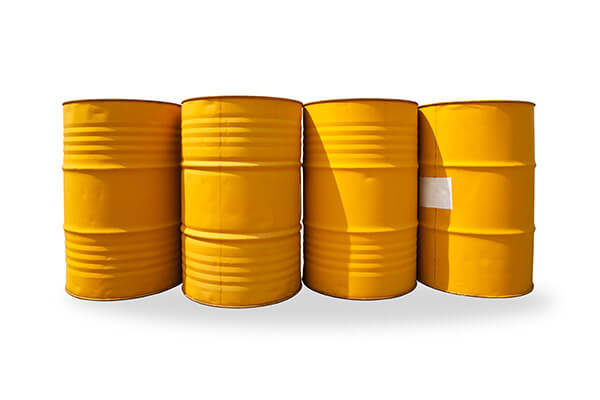
Copyright: Rig Zone
Officials from Mexico, the United States and Cuba met on Thursday for a second round of talks on the limits of the Western Polygon, an oil-rich area in the waters of the Gulf of Mexico, two people close to the discussion said.
Talks about who owns what is in the so-called “Doughnut Hole” were prompted after Cuba and the United States announced they would restore diplomatic ties in late 2014.
International law gives countries the right to any resources found in the sea within 200 nautical miles of their territory. But when areas overlap, as they do in the case of the resource-rich Doughnut Hole, countries have to craft an agreement.
The talks would conclude on Friday, one of the sources said, noting that the officials aimed to define the coordinates to define where the respective limits lie.
A Mexican government spokesman confirmed officials from the three countries met to try and make progress on the issue and that results of the meeting would be made public on Friday.
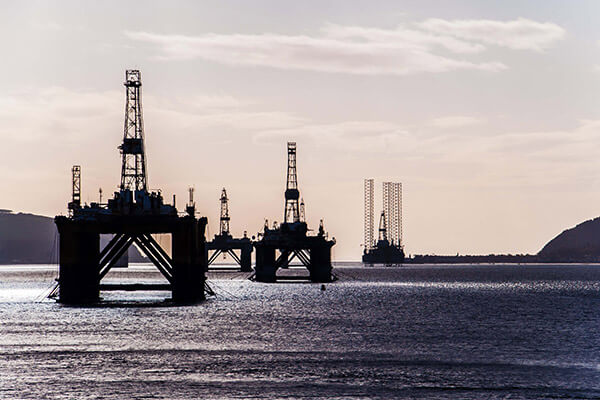
In a far corner of the Caribbean Sea, one of those idyllic spots touched most days by little more than a fisherman chasing blue marlin, billions of dollars worth of the world’s finest oil equipment bobs quietly in the water.
They are high-tech, deepwater drillships — big, hulking things with giant rigs that tower high above the deck. They’re packed tight in a cluster, nine of them in all. The engines are off. The 20-ton anchors are down. The crews are gone. For months now, they’ve been parked here, 12 miles off the coast of Trinidad & Tobago, waiting for the global oil market to recover.
The ships are owned by a company called Transocean Ltd., the biggest offshore-rig operator in the world. And while the decision to idle a chunk of its fleet would seem logical enough given the collapse in oil drilling activity, Transocean is in truth taking an enormous, and unprecedented, risk. No one, it turns out, had ever shut off these ships before. In the two decades since the newest models hit the market, there never had really been a need to. And no one can tell you, with any certainty or precision, what will happen when they flip the switch back on.
It’s a gamble that Transocean, and a couple smaller rig operators, felt compelled to take after having shelled out millions of dollars to keep the motors running on ships not in use. That technique is called warm-stacking. Parked in a safe harbor and manned by a skeleton crew, it typically costs about $40,000 a day. Cold-stacking — when the engines are cut — costs as little as $15,000 a day. Huge savings, yes, but the angst runs high.
“These drillships were not designed to sit idle,” said Willard Duffey Jr., an electrician who spent two decades with Transocean. The Deepwater Pathfinder, a ship he had served on for four years, was among the first to be parked off the Trinidad coast. The ship made the voyage there from the Gulf of Mexico about a year ago. Duffey was one of the last men aboard before the engines were turned off. He fretted constantly — “did I do everything I could?” — as he flew back home to Ore City, Texas. “To get the Pathfinder back up would be very difficult to guess actually,” he said.
These rigs, once famously labeled the “new Ferraris” of the oil world, are no ordinary ships. Carrying a price tag of about $500 million a piece, they are loaded bow to stern with sophisticated, and very heavy, gadgetry.
Below the water line sit a half-dozen Rolls-Royce thrusters, coordinated by satellite to push against each other and keep the rig hovering on top of wells lying as much as two miles underwater. Up on deck, there’s a robot that can be launched to work a screwdriver or a wrench under water pressures on the seabed that no human could survive. And the 220-foot tall, dual-activity oil-drilling derrick is capable of simultaneously lifting and lowering gear down to the seafloor, including a diamond-studded drill bit, a five-story-tall blowout preventer and a heavy-drill pipe. The derrick can handle as much as 5 million pounds of gear — equal to the weight of some 20 adult blue whales — going up and down at one time.
All of these fancy elements, though, are what make turning the ships back on so daunting. Chip Keener, whose rig-storage consulting firm advises Transocean, compares it to what would happen if you left a high-tech new car parked in the garage for months. The battery would be dead, sure, but then there’d also be a slew of pre-sets to reprogram. On a drillship, there are thousands and thousands of pre-sets. And unlike your car, those on a ship are essential to its proper functioning. “It’s a big deal,” says Keener.
For now, cold-stacking has been a huge success for Transocean, a long-time Texas powerhouse that’s based today in Switzerland. (It owned the offshore rig that BP Plc was operating in the 2010 Gulf of Mexico disaster.) The company reported a profit of $77 million in the second quarter, surprising investors who had been bracing for a loss. Its stock price jumped 8.5 percent in minutes the next morning in New York.
“I don’t think a simple congrats on this quarter’s cost beat is really sufficient,” one stunned analyst, Scott Gruber at Citigroup, told Transocean executives on a conference call. “A big kudos to all of you.”
Still, there are any number of deepwater rig operators unwilling to turn the engines off: Noble Corp., Rowan Cos. and Pacific Drilling, to name a few. They’re paying anywhere from $30,000 to $50,000 a day to store their out-of-work ships. Chris Beckett, the CEO of Pacific Drilling, said the unknowns of cold-stacking are just too great and the cost to keep the ships running too manageable — about $10 million a year — to turn them off. He likes the peace of mind that comes with this approach. “We don’t worry about how you start them again,” Beckett said in an interview in the company’s Houston headquarters.
The cold-stack versus warm-stack dilemma doesn’t figure to go away anytime soon.
Nearly half of the world’s available floating rigs are out of work today, and most observers expect that number will climb further. Not only are the drillship operators’ customers — the likes of ConocoPhillips and Total SA — slashing spending in high-cost offshore areas and canceling work contracts early, but new rigs that were ordered in recent years keep rolling out of shipyards. Bloomberg Intelligence estimates as much as $56 billion worth of offshore rigs, capable of drilling in everything from shallow water to oceans more than two miles deep, are still under construction.
It’s a far different mood than a couple years ago, when crude was hovering around $100 a barrel and just about every single deepwater rig on the planet was in use. Transocean’s Pathfinder was in many ways the symbol of those go-go days. In mid-2014, just as oil prices were peaking, Eni SpA agreed to pay Transocean $681,000 a day to lease the ship. It was one of the richest drilling contracts ever, an amount that’s about triple the rate a deal signed today would fetch. By the end of that year, with oil in freefall, Eni canceled the contract four months before it was due to expire.
Things are quiet on the Pathfinder these days. The water is calm off Trinidad, one of the top global destinations for drillship storage. A handful of seamen recruited locally make the rounds, in part to ward off criminal elements. They’re joined every once in a while by Transocean mechanics sent in to monitor the ships. The company’s chief operating officer, John Stobart, recently dropped in to check them out himself. CEO Jeremy Thigpen said Stobart came away encouraged.
“He was really impressed with the preservation of all the critical components,” Thigpen said at an energy conference in New York this month. “His belief is, ‘Listen, we’re going to be able to reactivate these rigs in a timely and low cost manner.’”
Stobart’s going to have to wait for his chance. Oil, after having briefly rebounded above $50 in June, is slumping again. And Transocean seems prepared to be in Trinidad for a while. According to island officials, the contract that the company’s negotiating to lease out seabed space could extend through October of 2020.

Financial Growth
Copyright: Rig Zone
Scroll to top










